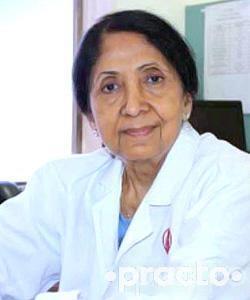| |
 Dr Indira Hinduja,Gynaecologist (IVF and Infertility specialist),P.D Hinduja Hospital, Mumbai
Infertility – IVF and ET
Infertility is a multifactorial disease in which couples are unable to achieve a
pregnancy even after being sexually active and not using any contraception.
Since the birth of the world’s first ‘test tube baby’,
Louise Brown, 40 years ago, 6 million babies have been conceived worldwide
through Assisted Reproductive Techniques.
The inception of in vitro fertilisation in India happened many years ago, when
we were working under the aegis of Institute of Research in Reproduction of the
Indian Council of Medical Research (ICMR) and Kings Edward Memorial Hospital
(K.E.M) in Mumbai.
Inspired by the success of Dr Patrick Steptoe and Dr Robert Edwards, we started
testing the therapeutic and surgical procedures initially on laboratory animals.
Success in them was followed by extensive work for an attempt to successfully
achieve IVF in humans with the permission of Scientific Advisory Committee and
Ethics Committee of both institutes. From August to December 1985, a number of
cycles were taken up for IVF-ET. We tried hard and learnt more and more from
each of these failures. Each cycle of failure taught us what could be further
improved in our methods and techniques.
Patient, Maniben was then 23 years old and married, whose fallopian tubes had
been damaged due to tuberculous infection and subsequent surgery. Consolidating
the lessons that we learnt from previous patients, we followed the following
procedure.
Ovaries of women contain millions of eggs since birth, and number of eggs start
growing in each menstrual, one egg matures in a single cycle and releases eggs
(oocytes) for the purpose of fertilisation. For in-vitro fertilisation, we
needed that the ovaries should release more than one egg. Hence, the ovaries
were stimulated by giving Oral medication namely, (Clomiphene citrate 100mg)
from Day 3 to Day 7 of her menstrual cycle. The oral medication was supported by
administering injection Human menopausal gonadotropin which was also given
intramuscular daily from Day 5 to Day 10 of the cycle in a dose of 75 IU per
day. The number and size of growing follicles was monitored by doing
transabdominal sonography. The growth of these follicles suggested that multiple
eggs were maturing in the ovary. We correlated this with blood estradiol levels
which is a hormone released by the growing follicles. An increase in the level
of this hormone levels mean that ovaries are responding to the treatment and the
eggs were growing. In this manner we were able to see at least four growing
follicles in each of the ovaries of the patient.
When the follicles were adequately grown, then Inj. Human Chorionic gonadotropin
(hCG) 10,000 IU was administered to the patient on Day 13 to mature the egg
within the follicle. This was in order to make the egg the ready for
fertilization. Thirty four hours after hCG, the eggs were retrieved. Using an
abdominal approach, the ovaries were seen and a needle was inserted in each
follicle to remove the fluid collected in the follicles . This fluid was
screened under microscope for presence of oocytes / eggs. In this way we found 5
mature eggs and 3 immature eggs.
Simultaneously the semen of the husband was taken, washed and centrifuged. This
helped us to isolate the best and most rapidly motile sperm from the sample for
fertilisation. The eggs that were retrieved were combined in a laboratory dish
with her husband’s sperm. The eggs were seen After 24 hrs for penetration of
sperm in egg. After 48 hours and 72 hours for further growth i.e. 2-4 cell and
6-8 cells.
On November 30 1985, we transferred the embryos into the patient Maniben’s
uterus. On December 18 we did BhCG testing which indicated a positive pregnancy
test and subsequently confirmed the pregnancy by redoing the BhCG test on 26
December 1985. Ultrasound was done on January 6, 1986 which showed a healthy
growing pregnancy.
The first scientifically documented IVF baby Harsha, was thus born on 6th August
1986 by Ceasarian section in KEM hospital, Mumbai. Now Harsha herself is a
mother to two children, a boy and a girl.
The entire process of conception to the delivery was documented by us and lies
documented in store with the Institute for Research in Reproduction now called
NIRRH-National Institute for Research in Reproductive Health.
Today, IVF is considered a mainstream medical treatment for infertility. In
India alone, every year a significant number of babies are being born out of
IVF.
IVF has revolutionised the field of reproductive technology, providing hope,
faith and a chance at parenthood to so many childless couples, having numerous
causes including male factor,who struggle with various medical and social
aspects of infertility.
|


